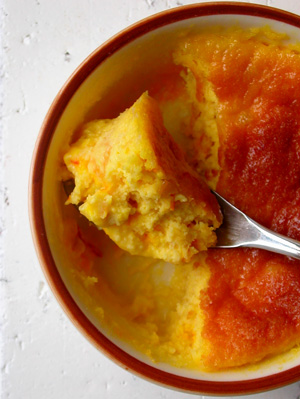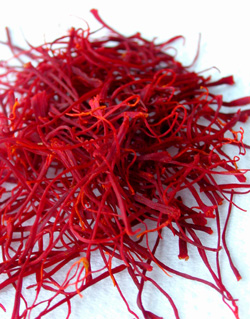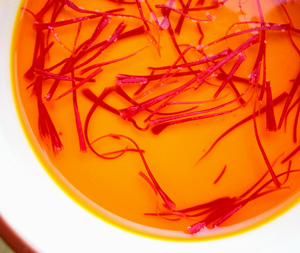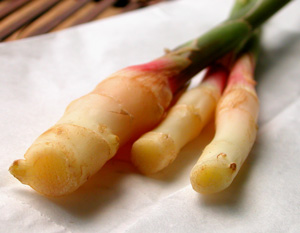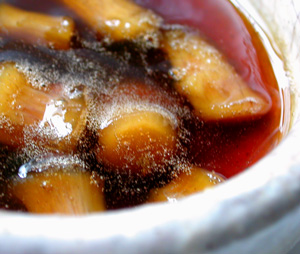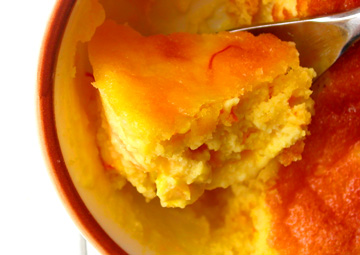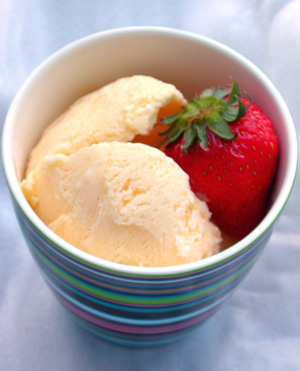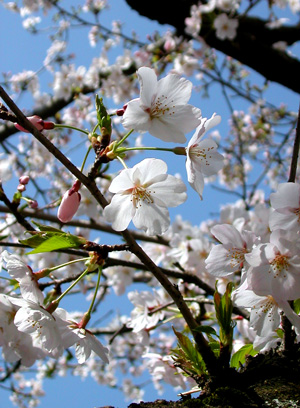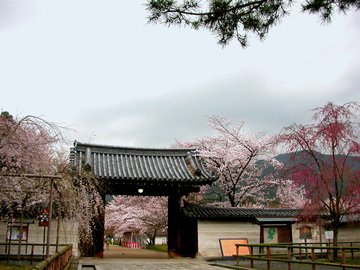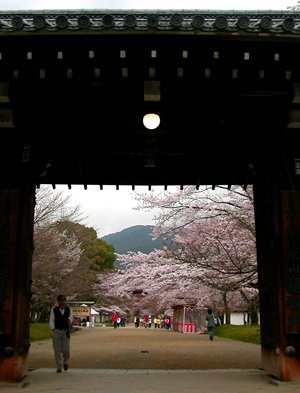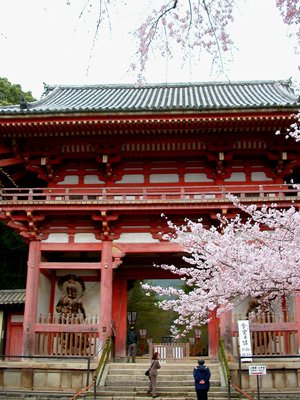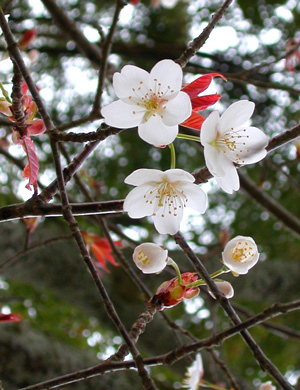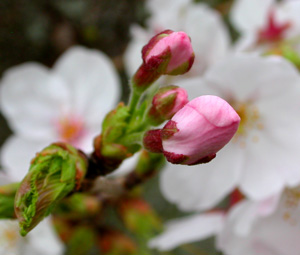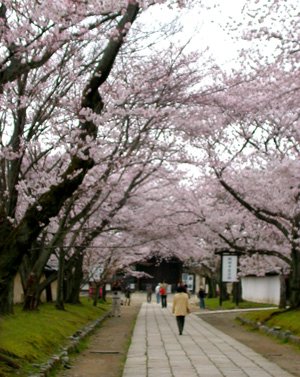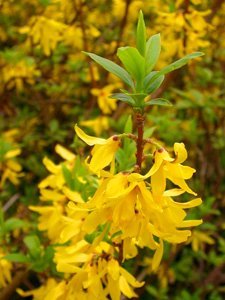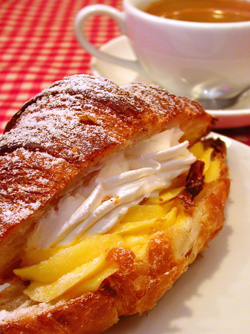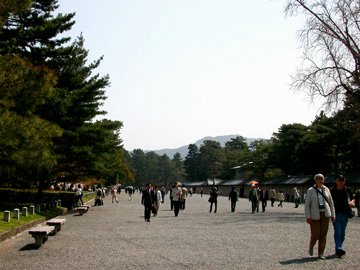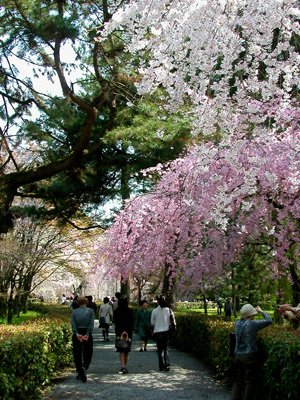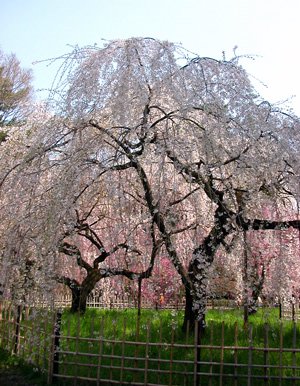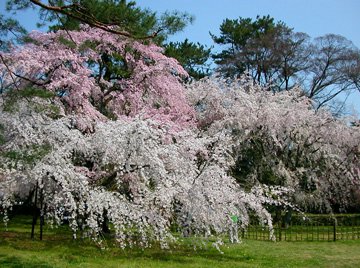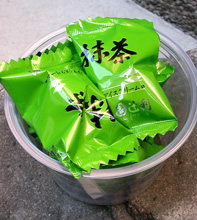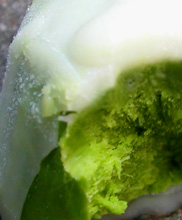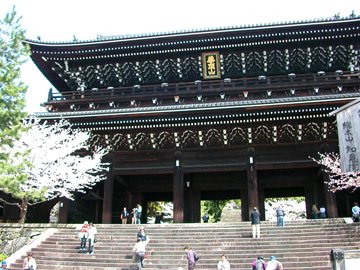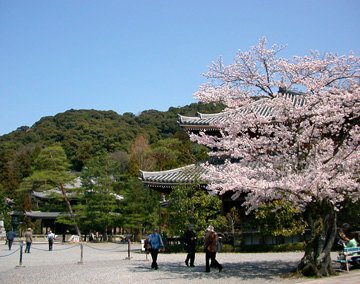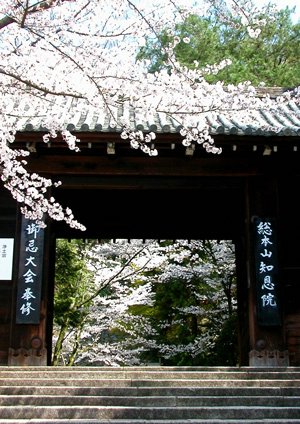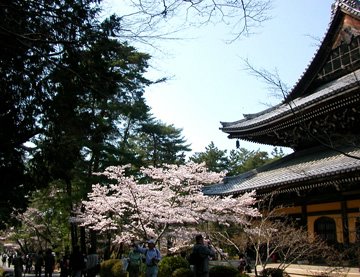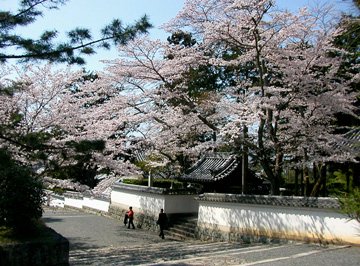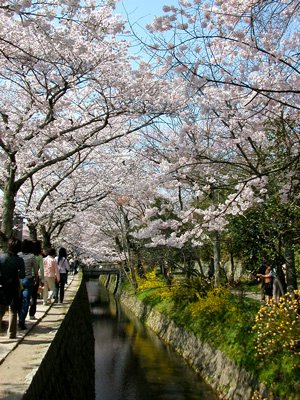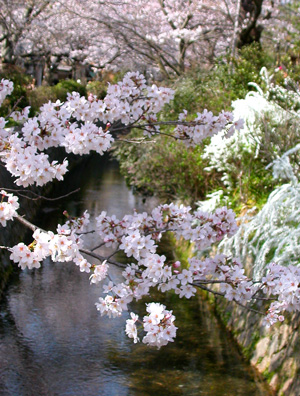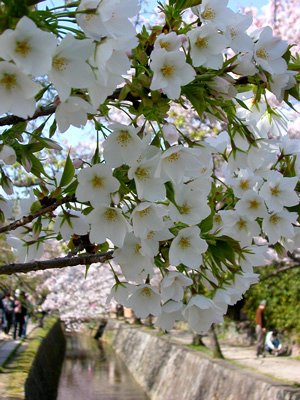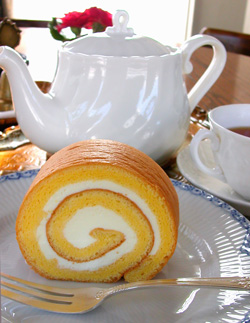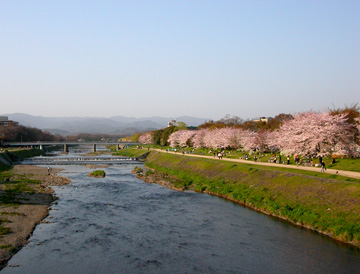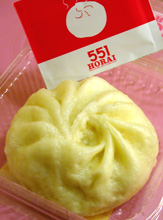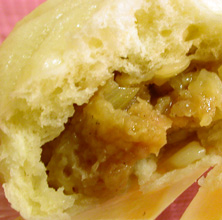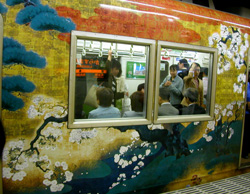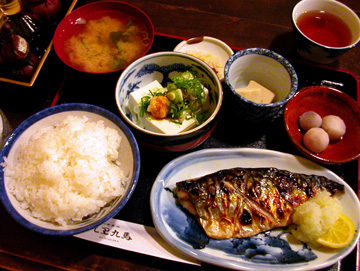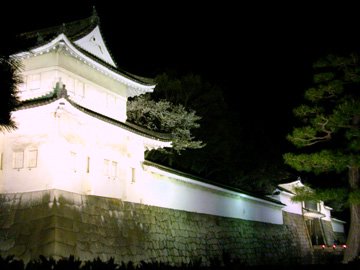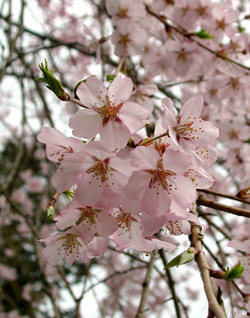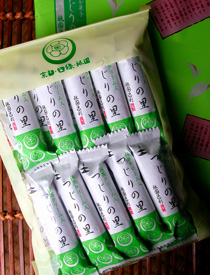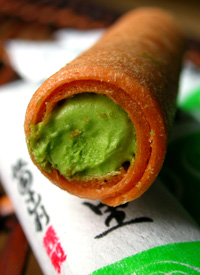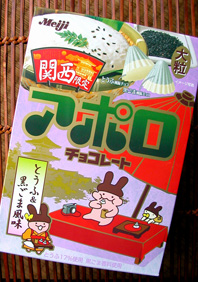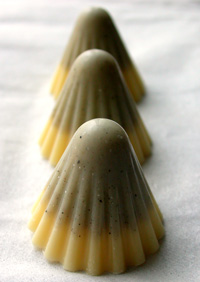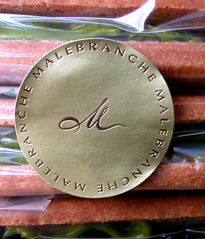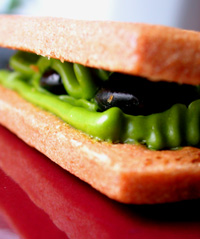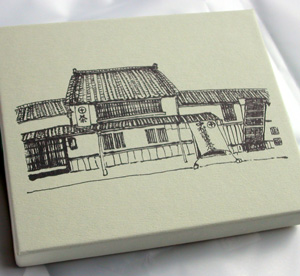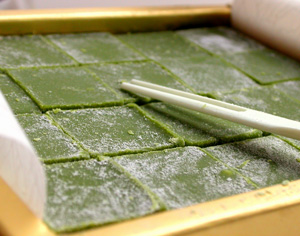 The memories of my recent Kyoto trip are still with me, so are the things I found there. I liked the matcha pavés au chocolat from Nakamura-ya Tokichi so much I mail-ordered another box of them, along with a rather unusual kind of cha-colate: chocolate infused with hoji-cha, or roasted green tea.
The memories of my recent Kyoto trip are still with me, so are the things I found there. I liked the matcha pavés au chocolat from Nakamura-ya Tokichi so much I mail-ordered another box of them, along with a rather unusual kind of cha-colate: chocolate infused with hoji-cha, or roasted green tea.Hoji-cha may be much less known than regular green tea outside Japan, but it
is a nice, refreshing tea with a slightly smoky taste that is not unlike that of barley tea. It isn't green, by the way, due to the roasting process.
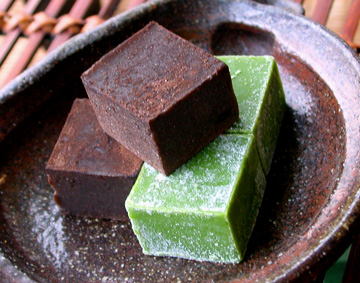 That's how these hoji-cha chocolates aren't green like matcha chocolates; they almost look like mere regular chocolate cubes, almost.
That's how these hoji-cha chocolates aren't green like matcha chocolates; they almost look like mere regular chocolate cubes, almost. Now there's nothing new about the east-meets-the-west combination of matcha and chocolate in this country, but when it comes to Japanese tea other than regular green tea, it's another story. I didn't know of chocolate with hoji-cha until recently I when saw Nakamura-ya Tokich's*1, and I didn't seem to be the only one.
Just so you know, we never, ever - not at least as far as I am concerned and I know - sweeten hoji-cha to drink. Never. But we wouldn't sweeten green tea for drinking, either, and that made us yuck when matcha sweets made their first appearance years ago. But we are now not only used to them but love them - so why not trying hoji-cha in sweets? At least a try, should we?
I was more curious than suspicious, and the first bite turned my anticipation into conviction: it was yummy! It did taste of fragrant hoji-cha, but in a subtle and pleasant way - actually, if I had eaten a piece without knowing it was hoji-cha chocolate, it could have been hard to figure out the secret.
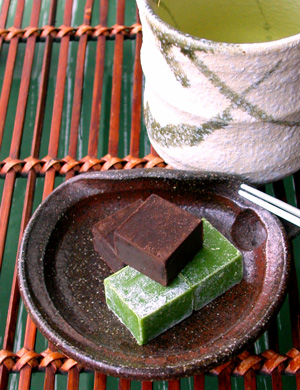 Together, the matcha and hoji-cha chocolates made a nice company to a cup of green tea*2 freshly brewed using leaves I also bought from the same tea shop.
Together, the matcha and hoji-cha chocolates made a nice company to a cup of green tea*2 freshly brewed using leaves I also bought from the same tea shop.*1: Although, I did know of hoji-cha kasutera (sponge-like egg-rich Japanese cake) sold by another Kyoto tea shop Gion Tsujiri, which I bought but haven't tried yet.
*2: It's a bit confusing, but "matcha" and "green tea" are not synonyms; matcha normally comes in a form of powder, and makes very strong, thick green tea whose taste is what we usually find in "green tea sweets". A weak, paler-looking green tea like the one in the picture above, on the other hand, is called ryoku-cha, which literary translates "green tea", and this is likely to be what Japanese people would first associate with the term "green tea". Even now that everyone doesn't get surprised by "green tea sweets", people still won't think of this latter kind of green tea be sweetened... so something like American Arizona Tea would be a pure amaze to some.
+++
We're having really warm weather these days, and here's the last bit of cherry blossoms; this time it's yae-zakura, the one with multi-layered pink petals.
 Carpet of flower petals
Carpet of flower petals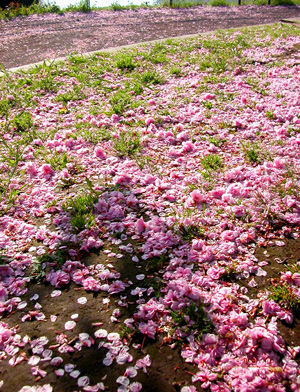 By the Imperial Palace, Tokyo
By the Imperial Palace, Tokyo







